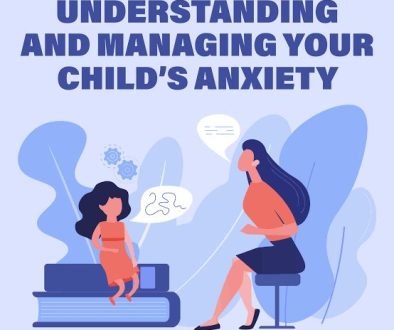Children’s Mental Health in this Digital Age
In today’s world, children are growing up surrounded by digital devices. From smartphones and tablets to video games and social media, technology plays a significant role in their daily lives. While these innovations offer educational benefits and entertainment, they also come with potential risks to children’s mental health. As technology becomes increasingly embedded in their routines, it is essential to examine how the digital world impacts children’s emotional well-being and development.
The Positive Side of Technology for Children’s Mental Health
Technology, when used responsibly, can offer several benefits to children’s mental health and overall development:
1. Educational Tools: Digital platforms provide access to a vast array of educational content that can enhance learning. Apps and websites designed for children can stimulate creativity, critical thinking, and problem-solving skills, making learning more interactive and fun.
2. Social Connection: For children, especially those who may struggle with face-to-face interactions, digital communication can provide a way to connect with peers. Online platforms, such as video games or social apps, can help kids maintain friendships and build social networks, even across distances.
3. Mental Health Resources: Some apps and websites are designed to help children and teens manage stress, anxiety, and emotions. Mindfulness apps, guided meditations, and mental health resources tailored to young users can provide tools for managing mental well-being from an early age.
The Downsides: How Digital Devices Can Harm Children’s Mental Health
Despite these benefits, there are growing concerns about the negative effects of excessive screen time and digital engagement on children’s mental health. Some of the most significant challenges include:
1. Increased Anxiety and Depression: Excessive screen time, particularly on social media, has been linked to higher rates of anxiety and depression in children and teens. Platforms like Instagram and TikTok can lead to social comparison, where children compare themselves to unrealistic or idealized images, which can lower self-esteem and lead to feelings of inadequacy.
2. Sleep Disruption: Too much time spent on digital devices, especially before bed, can negatively affect sleep patterns. Blue light emitted from screens interferes with melatonin production, making it harder for children to fall asleep. Poor sleep is directly linked to mood disorders, increased stress, and reduced cognitive function.
3. Cyberbullying: The rise of digital communication has given way to cyberbullying—harassment, threats, or intimidation that occur online. Unlike traditional bullying, cyberbullying can happen 24/7 and be more difficult to escape. The emotional toll of online harassment can lead to anxiety, depression, and even suicidal thoughts in vulnerable children.
4. Addiction and Obsessive Behavior: Many digital platforms, especially video games and social media, are designed to keep users engaged for long periods of time. Children can easily become hooked on these platforms, leading to obsessive behavior, distraction from real-life responsibilities, and diminished interest in physical activities or face-to-face interactions.
5. Developmental Delays: Excessive screen time during early childhood can interfere with developmental milestones. Children under the age of five, for example, need to develop motor skills, language abilities, and social awareness through physical play and interaction with others. Excessive use of screens can limit these vital experiences, potentially causing delays in cognitive and social development.
Why Children Are More Vulnerable
Children, particularly those in their formative years, are more susceptible to the negative effects of technology for several reasons:
1. Developing Brains: Children’s brains are still developing, particularly in the areas responsible for impulse control, decision-making, and emotional regulation. This makes them more prone to addiction and less able to set healthy boundaries when it comes to screen time.
2. Social Pressure: As children grow older, peer influence becomes a significant factor in their lives. Social media amplifies these pressures, creating environments where “likes” and “followers” are seen as measures of self-worth. This can lead to unhealthy behaviors and self-esteem issues.
3. Lack of Guidance: Many children are not taught how to use technology responsibly. Without proper guidance and monitoring from parents or educators, they may engage with inappropriate content, encounter online predators, or develop unhealthy digital habits.
Promoting Healthy Digital Habits
To mitigate the risks and promote positive digital habits, parents, educators, and caregivers can take proactive steps to help children navigate the digital age in a healthy way:
1. Set Screen Time Limits: The American Academy of Pediatrics recommends setting reasonable limits on screen time, particularly for younger children. For children under two, screen time should be very limited, while older children should balance their online activities with offline, physical, and social interactions.
2. Encourage Open Conversations: It’s essential to talk openly with children about their online experiences. Parents should create a safe environment where kids feel comfortable discussing issues like cyberbullying, inappropriate content, or social pressures.
3. Promote Offline Activities: Encouraging children to engage in outdoor play, physical activities, and hobbies away from screens is crucial. This helps them develop real-world social skills, stay physically active, and enjoy a balanced lifestyle.
4. Teach Digital Literacy: Educating children about the responsible use of technology is key. This includes teaching them about privacy settings, the dangers of oversharing, and how to recognize false information or inappropriate online behavior.
5. Model Healthy Behavior: Children often mimic the behaviors they observe in adults. By setting an example and practicing healthy screen habits, parents can guide children toward a more balanced and mindful use of technology.
In conclusion
While the digital age has brought immense benefits to education and communication, it has also introduced new challenges for children’s mental health. The key to helping children thrive in this environment is balance—encouraging them to use technology for learning and connection while protecting them from its potential harms. By setting healthy boundaries, promoting digital literacy, and fostering open communication, parents and educators can help children navigate the digital world without compromising their mental well-being.



